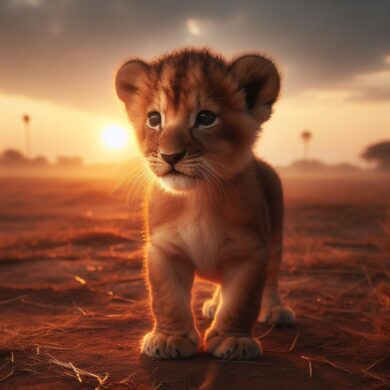A male lion? ″ Clay” was actually a female, but his mane didn't grow at Maruyama Zoo.
Why is the lion called the king of beasts?
On the other hand, lion packs usually have 5 to 6 females, but there are often 1 or 2 males, and it is said that the appearance of leading the females of the herd with one male overlaps with the image of the king who protects the country, and it is said that he came to be called the "king of 100 beasts
What is the lifespan of a lion in captivity? It is said that they live for 15 to 20 years in captivity, and 10 to 15 years in the wild.
Nowadays, it is difficult for them to survive outside of areas designated as protected areas or national parks. The reasons for this include being targeted by poachers who hunt wild lions for recreational purposes, a decrease in habitat due to advanced development, and a lack of prey. In addition, lions that live near human settlements such as India are targeted for extermination as pests that attack livestock.

A male lion? ″ Clay” was actually a female, but his mane didn't grow at Maruyama Zoo.
Sapporo Maruyama Zoo announced on the 1st that Clay, a lion (1 year and 9 months old) kept as a male, was now a female. Even after he was 1 year and 6 months old, his mane, which is a male characteristic, had not grown, and his urine output did not seem male-like.This was discovered by requesting Hokkaido University for genetic testing using blood.

How to Determine the Sex of a Lion?
1. The Mane
The most obvious way to identify a male lion is by its mane. Adult male lions have a thick, luxurious mane of hair around their neck and shoulders. This mane serves several purposes, including attracting mates, intimidating rivals, and protecting the neck during battles. Female lions do not have manes.
1. The Mane
The most obvious way to identify a male lion is by its mane. Adult male lions have a thick, luxurious mane of hair around their neck and shoulders. This mane serves several purposes, including attracting mates, intimidating rivals, and protecting the neck during battles. Female lions do not have manes.

3. Size and Build
Generally, male lions are larger and more muscular than females. Males have broader heads and more powerful shoulders. However, size alone isn't always a reliable indicator, especially with younger lions.
4. Behavior
Observing lion behavior can provide clues about their sex:
- Male: Males are often more solitary or form coalitions with other males. They are primarily responsible for defending the pride's territory.
- Female: Females form the core of a pride, raising cubs and hunting together.
5.Blood test
Generally, after 6 months of age, gender can be determined with high accuracy by checking the presence or absence of the Y chromosome in the blood.



